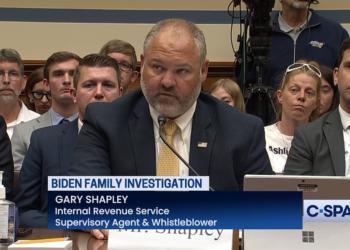At the turn of the 20th century, collegiate football could best be described as ruthless, chaotic, and hazardous. Injuries were common, many times serious, and, in a few cases, deadly.
President Theodore Roosevelt is credited with highlighting a serious review of the fledgling sport, resulting in reforms such as allowing the forward pass, increasing the distance for a first down from 5 yards to 10, and establishing a neutral zone dividing one team’s offense from the other’s defense. Injuries declined and interest in the sport rose as measured by participation, attendance, and competition.
More than a century later, another source of confusion has arisen: the name, image, and likeness regime, an ad hoc creation designed to compensate athletes for their services to their respective institutions. Free tuition, books, supplies, and housing were deemed insufficient. Athletes are now entitled to compensation for their skills and prowess in proportion to their ability to draw fans’ presence and expenditures. Never mind that only about 5% of participating institutions raise sufficient revenue to cover the direct expense of intercollegiate competition. Thus, the NIL assumes that sponsors, not colleges, would compensate respective athletes.
Or so the theory goes.
Labor law does not designate athletes as employees, but coaches, administrators, and alumni are heavily involved. Coaches of various institutions have publicly complained that not a day goes by without one athlete or another asking for more money. Purportedly, one stellar player eschewed the NFL draft to transfer to another university because the pay was better. Granted, this is a small sample, but a glimpse around reveals similar, if not overwhelming evidence of many not-so-private agreements. This should not be.
One plausible measure emerges in this open market. A simple, freely agreed-upon measure among all the parties could rein in the above-described practices. Such an agreement would prohibit university administrators, coaches, staff, and alumni from acting as agents for the respective signees. Instead, athletes would be referred to or sought out by practicing independent agents who would be lawfully authorized to negotiate with possible sponsors for their clients. In an open market, it should not matter to the athletes which institutions they plan to attend, as their market value would be determined independently of the particular institution selected.
Collegiate baseball remains relatively unscathed from the desire to compensate its respective players. Baseball has something that the NFL and the NBA eschew: a farm system. Baseball players are shuffled from league to league within a farm system that has served it well.
Collegiate players form a convenient supply of athletes for the farm system and, in turn, for the big leagues. The farm system channels players easily and quickly into the ranks of professional baseball.
Collegiate football and basketball are, in effect, the farm systems for the NFL and NBA. An argument can be made that professional football and basketball should compensate the respective schools for the athletes they draft from the collegiate ranks. Absent collegiate athletic programs, the NFL and NBA would have to form farm systems of their own. That’s undoubtedly the reason they don’t.
A further complicating factor for universities or their athletic departments that participate directly in the NIL system is the risk of losing their tax-exempt status by acting as though they are employers. In addition, there are various state and national labor laws looming in the background. Pandora’s box comes to mind.
The freely agreed-upon measure to monitor and enforce the terms could take the form of an amateur collegiate athletics association, whose primary purpose would be to encourage and monitor amateurism in the collegiate ranks. If the NFL and NBA were open to drafting 18-year-olds, there would be sufficient talent for those leagues to form a farm system much like professional baseball. But then why pay for something you can now get for free, to quote an old saw?
Where is Teddy Roosevelt when you need him?














